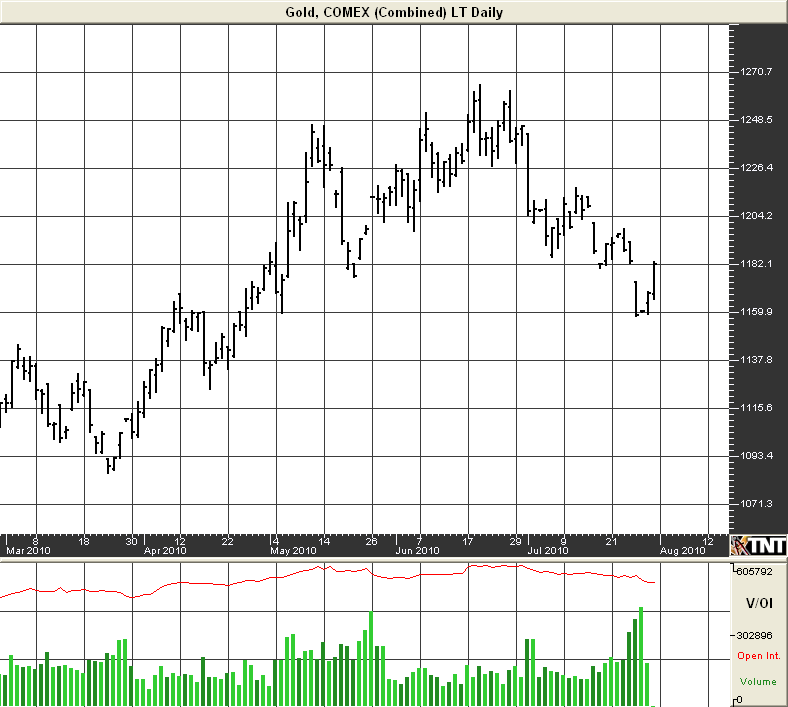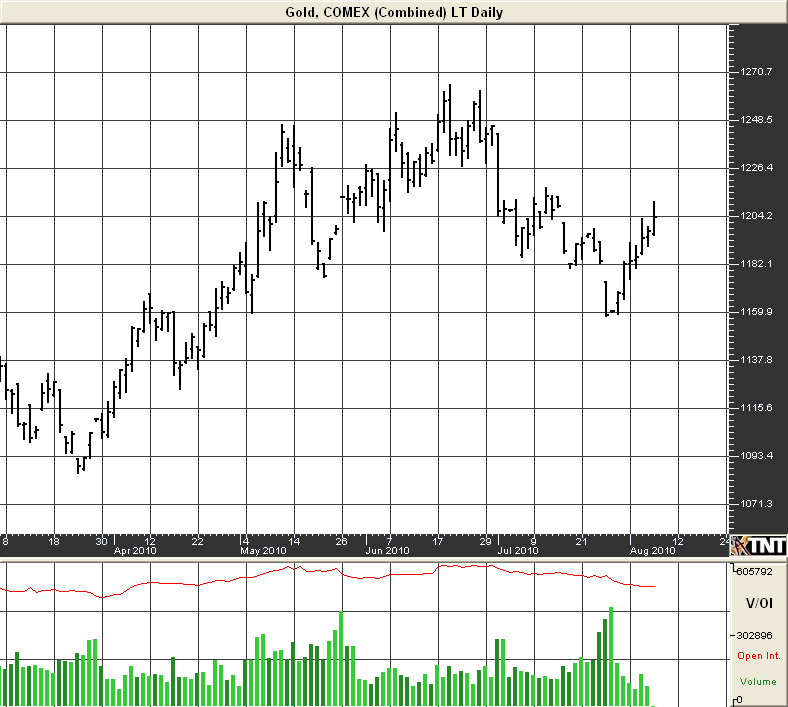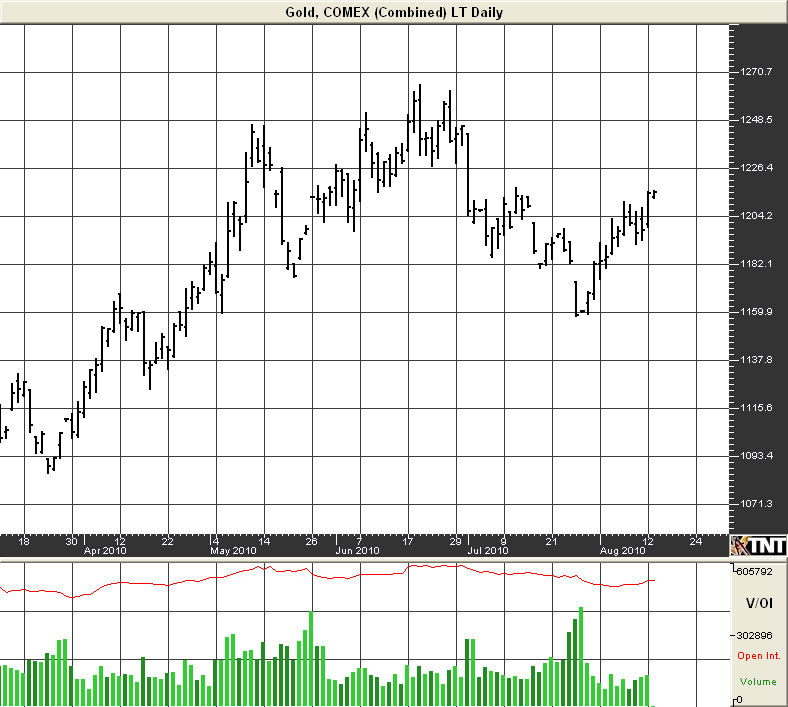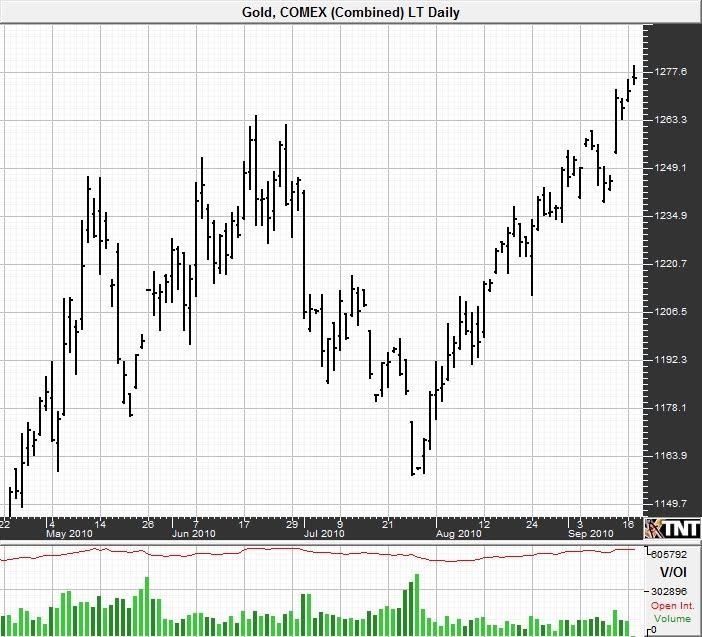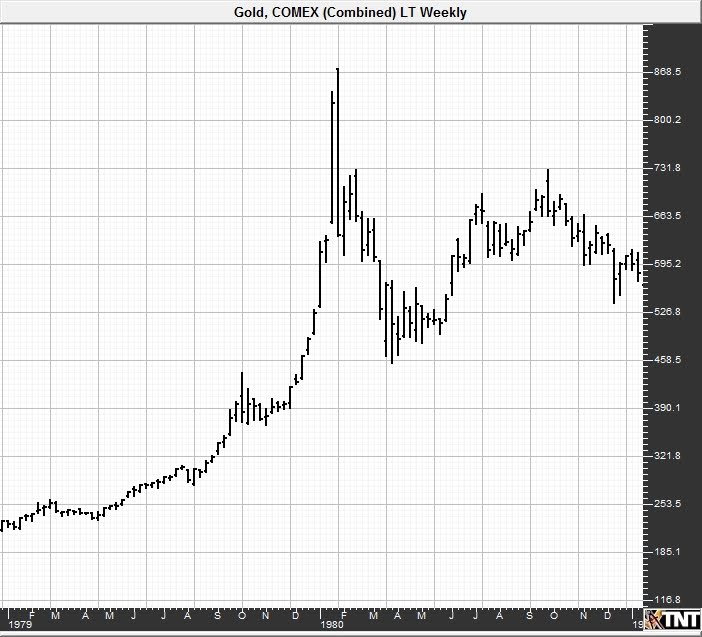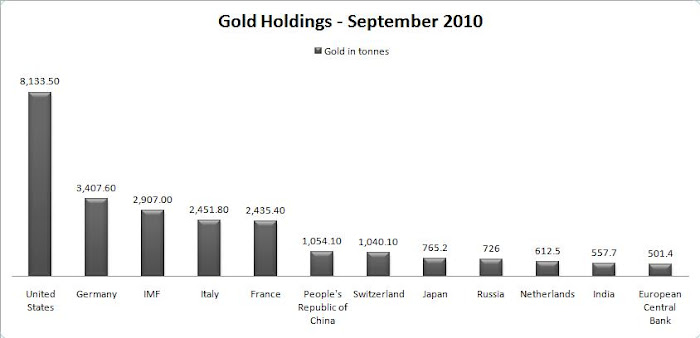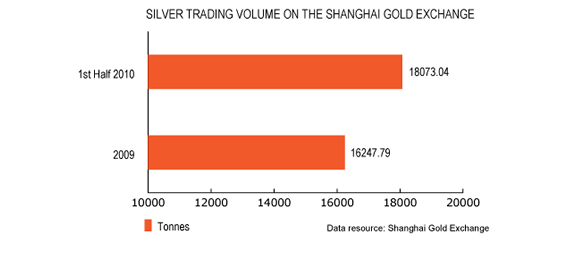Gold & Reserves
Back to our weekly caring topic - Gold. Today, we will have a discussion on Gold & Reserves with the information shared by
The Bullion Report. I hope that you can find out what should you do in this changeable time in Gold prices.
Gold & Reserves
Among the most intriguing information in the physical gold sphere is the ebb and flow of assets from central banks. Reserves of gold have shifted on more than one occasion in the preceding centuries. Sometimes even the mere rumor of a sale or purchase by one country or another can have dramatic impacts on the gold markets and prices. The recent climate of financial and economic issues on a global scale could provide some reform that sparks rumors of that nature. Understanding the ins and outs of this part of gold demand could be an important part of gold fundamentals for the weeks and months to come.
Past performance is not indicative of future results.
***chart courtesy Gecko Software’s Track n’ Trade Pro
What are gold reserves all about?
In a nutshell, reserves are those assets held by central banks or other monetary authorities. They are assets used to back liabilities of the central bank. They could theoretically be fiat currencies or precious metals like gold. Gold reserves can be held as a store of value. A precious metal reserve can function as a means for the bank to diversify holdings rather than be at risk for the volatility of a single asset. Gold is less likely to be undermined by the monetary policies of the nation.
A lot of the early building of gold stocks took place during the period of the gold standard. Circulating money from the banks was tied to the store of gold since notes were convertible to the precious metal at a specified rate. However, few banks likely held enough gold to cover all of the currency they issued. The early part of the 20th century saw a large build in these reserves and they peaked in the 1960s at around 38,000 tons. The gold standard fell by the wayside, but the demand for gold as a reserve asset did not. The average bank holds around 10 percent of its reserves in the precious metal, and some hold as much as 75 percent.
These gold holdings are important on the global scene because there have been pivotal moments in gold price history that were directly affected by information about gold reserves. Following the large price jump in gold in 1980, there was a period of selling and pressure on prices. The result was a series of fresh lows for gold prices in the 1990s. More than one analyst attributes this period of cheaper gold to the central banks and their attitude towards gold reserves.
During this time, the idea was that gold was a dead end in terms of yield. After all, gold holdings do not produce interest payments. The returns from lending gold might have appeared less than stellar compared to other assets. Rumors swirled that official stocks would be pared back and the official total dropped about 10 percent by 1999. From a supply view of the gold market, this brought in selling pressure that ravaged prices.
The price destabilization contributed in part to the 1999 Central Bank Gold Agreement (CBGA) from European banks which stated that their reserves would retain gold as an important component. Basically, the agreement dictated how much gold could be sold collectively over the following five-year period. In each of the years 2004 and 2009, banks agreed to renew the CBGA. The 2009 agreement has a ceiling of the sale of no more than 400 tons of gold annually. The banks who signed the agreements include Germany, Belgium, Ireland, Italy, Switzerland, and a host of others across Europe. These agreements are important signals to gold markets since they could preclude any surprise bulk sales of the metal that could bring pricing chaos.
How much gold do they hold now?
Many banks don’t allow for a physical audit of stored gold, but the International Monetary Fund (IMF) delivers statistics on the asset reporting from various nations. The World Gold Council regularly releases rankings for this data and as of September showed that holdings from these nations and other official organizations topped 30,000 metric tons. The following chart shows the holdings for some of the top ranking groups.
Data courtesy of the World Gold Council
It is important to note that although the European Central Bank (ECB) holdings are just over 500 tons, the Maastricht treaty allows reserves from national central banks in the European Union to be at the ECB’s disposal.
The overall holdings of central banks and the official sector are far lower than they were at their peak in the middle of the last century. Where once this side of demand counted for around 50 percent of physical above ground supplies, it now accounts for about 20 percent.


